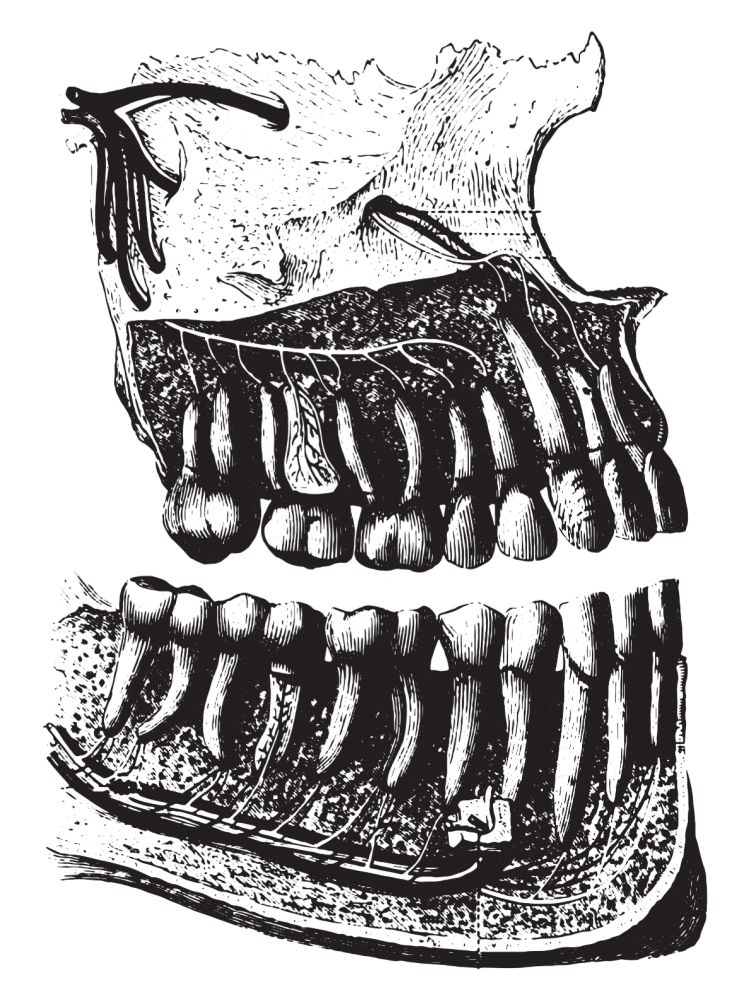
Light-based Medical and Health Devices (Part 3)
May 15, 2024
Dental History: Dentistry in the Age of Enlightenment
July 28, 2024Dental history dates back thousands of years and across numerous civilizations, with early examples of ancient dental history identified in the ancient cultures of the Sumerians, Egyptians, Chinese, Indians, Greeks, Romans, and more. Through the centuries, early efforts to understand dental ailments gave way to more refined knowledge, as too did rudimentary practices evolve into carefully crafted techniques. These founding efforts serve today as the groundwork for modern dentistry. The practices and tools may look different from those applied at your biannual dental visit–and assuredly they are–but without these ancient inquires, we would not have the defined field and time-tested practices we see today.
In this AlgerBlog, we are exploring ancient dentistry, its earliest roots, and how aged dental theory and practices developed over time into a dedicated field defined by practiced medical techniques, innovative inventions, and reliable knowledge.
The Beginnings: Prehistoric Dentistry
Neanderthal Dentistry

It is unclear exactly when dental practices were first applied. However, there are many instances of ancient peoples and cultures augmenting teeth in ways that suggest early dentistry. A 2017 study published by the Bulletin of the International Association for Paleodontology identifies an example of prehistoric dentistry. The study, led by University of Kansas researcher and professor emeritus of anthropology David Frayer, describes his team’s discoveries of toothpick grooves and other signs of manipulations on the teeth of a 130,000-year-old Neanderthal. The team hypothesizes that the toothpick grooves, breaks, and scratches on the premolar are evidence that humanity’s closest prehistoric relative was performing self-dentistry. While this discovery marks one of the earliest examples of dentistry, notably older than some of the dental practices of the ancient world that will address in this article, it is still a fledgling discovery for prehistoric dentistry according to Frayer, who acknowledges that toothpick grooves have been discover in Neanderthal mouths from as far back as 2 million years ago.
Early Human Dentistry
Researchers led by Stefano Benazzi, a paleoanthropologist at the University of Bologna, discovered evidence of early dental work in prehistoric man of the Paleolithic Era based on a 14,000-year-old tooth found in northern Italy. The tooth belonged to an Old Stone Age 25-year-old male and contained a cavity and “extensive enamel chipping” made before the subject’s death. The research team claims this chipping is evidence of early dental knowledge and practices. Following modern experimentation with materials contemporaneous and geographically native to northern Italy of the era, the team concluded that the dental work was most likely performed using dental tools made out of sharpened flint.
By the New Stone Age, prehistoric man had developed more refined dental treatments beyond these earlier examples. For instance, 9000-year-old molars discovered in a Neolithic graveyard in Pakistan showed signs of dental drilling, likely performed to remove decayed tissue. Additionally, a cavity in a 6500-year-old human tooth from Slovenia was discover to have been treated with a Beewax dental filling. These comparatively modern examples of prehistoric dentistry suggest significant advancements in dental practices during the eras of early man.
Ancient Dentistry: Writings and Practices
The Sumerians
Ancient civilizations have been writing about dentistry for thousands of years. The ancient Sumerians of Mesopotamia (located in modern-day Iraq, just north of the Fertile Crescent), for instance, wrote about invasive “tooth worms” as early as 5000 BC. According to the Sumerians, tooth worms cause tooth decay by boring into and destroying the teeth. This conclusion likely came about because the holes created by cavities look similar to the holes certain worms make when boring into wood. While eventually disproven, the tooth worms theory wormed its way into numerous cultures across the subsequent centuries, with the myth believed in China, North Germany, and England, where tooth worms were thought to look like eels.
Ancient Egypt

Dental Categories
Written accounts of early dental positions can be found in the hieroglyphs of ancient Egypt. Researchers have translated Egyptian writings found on tombs and monuments that describe various categories of dentists working in ancient Egypt. Two basic categories group dental practitioners into “one who is concerned with teeth” and “one who deals with teeth.” While the full distinctions between these two classifications are not fully known, it is theorized that the titles reflect differences in duties and status. Additionally, Egyptian texts describe individuals as “chief of dentists” and the presumed highest dental position of “chief dentist of the palace.”
The First Dentist
Egyptian hieroglyphs also identify the world’s first dentist, Hesyre (sometimes spelled: Hesy-Re). Six carved wooden panels found in his tomb at Saqqara (located near modern-day Cairo) indicate that Hesyre, who lived around 2660 BC, held the title of “chief of dentists” as well as a number of other religious and secular titles.
The Ebers Papyrus
The Egyptian text, the Ebers Papyrus, which was written between 1700 BC and 1550 BC, refers to various tooth diseases and outlines methods for treating ntoothaches.
The Greeks
The philosophers Hippocrates and Aristotle, who lived between 470 BC and 377 BC, wrote about various dental practices in ancient Greece. Included in their tretises were descriptions of the eruption pattern of teeth, practices for treating tooth decay and gum disease, processes for extracting teeth with forceps, and the technique of using wires to stabilize loose teeth and fractured jaws. Hippocrates’s and Aristotle’s detailed accounts predate the first dedicated dentistry book, the German-published The Little Medicinal Book for All Kinds of Diseases and Infirmities of the Teeth by about 2,000 years. In addition to establishing ancient Greece as a significant point of ancient dental history, the documenting of this medical knowledge helped contribute to Hippocrates’s reputation as the ” Father of Medicine.”
Ancient China
Ancient China was one of the earliest Eastern cultures to develop documented dental practices. Researchers have found that China was performing rudimentary dental extractions as early as 6000 BC. By around 2700 BC, Chinese medical practitioners were using acupuncture as part of their tooth decay treatment. And by 500 BC, China and India were both using toothpaste. This ancient Chinese toothpaste would have included a variety of ingredients over the ages, such as ginseng, herbal mints, and salt.
Significant Refinements in Dental Practices
The Roman physician, philosopher, and author of the seminal ancient medical text De Medicina wrote extensively about oral hygiene and several refined dental techniques by 100 BC. His writings include processes for stabilizing loose teeth using gold or silk threads to tie the teeth to the gums and prosthetic replacement teeth. A talented pharmacist and surgeon, he also outlined treatments for toothaches, teething pain, and even procedures to treat jaw fractures.
Over the following 1,000 years roughly, dental practices rapidly refined. By around 200 AD and 700 AD the Etruscans and Chinese respectively were incorporating maleable metals into their dental practices. The Etruscans used gold for crowns, fixed bridgework, and dental prosthetics.
The Chinese concocted a silver and mercury mixture, known as “silver paste,” that was used for teeth fillings.
Modernizing Dentistry
While the Middle Ages included some significant advancements in dental practices, early texts of proven techniques and knowledge, and initial efforts to organize dentistry into a more defined field, modern dentistry really began to take shape in the 18th century and onward. The associated history of modern dentistry will be the subject of a later Alger Blog. For now, we acknowledge the many millennia of early dentistry upon which all modern advancements have been built.
Continue to explore and learn about the history of dentistry on the AlgerBlog.



